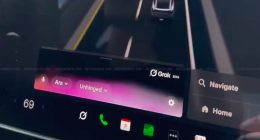Troubles? A lot them? Uber is well-aware of these two terms and they’re intertwined for the ride-hailing giant. Just when you assume that Uber is out of hot waters, a new report showcasing another one of its unjust practices surfaces on the interwebs. Another brand spanking new report has hit the streets and projects the company in a bad light yet again.
A fresh report from the New York Times suggests that Uber CEO Travis Kalanick was threatened by the CEO of one of the largest and most significant players in the technology space — Apple about a couple years ago. Tim Cook had a face-to-face meeting with Kalanick to call out Uber’s ride-hailing practices and how the company was not only violating iOS app privacy guidelines but also trying to hide it from Apple engineers. Cook further sounded the alarm when he threatened that he would remove the ride-hailing application from the App Store, which would’ve come as a huge blow for Uber. It meant losing millions of users across the globe.
In a lengthy character profile of Uber’s CEO, the NYT has described him as a fierce leader who’s ready to break the defined norms and go to any lengths to get his way. And the company has now been accused of adopting such practices acts more than once. In 2015, the ride-hailing giant has been accused of tracking iPhone users even when they’d deleted the Uber app from their devices.
They had even tried to hide their efforts, prevent it from discovery by the iPhone maker, simply by geofencing Apple headquarters in Cupertino. The engineers at the firm were being served a different code for the application, so as to shield its illegal practice. But, the ride-hailing giant was still caught in action, courtesy of Apple engineers working at different offices. Kalanick was then invited over for a scolding by Apple’s CEO, who said:
I’ve heard you’ve been breaking some of our rules.
Called fingerprinting, Uber has been alleged of employing this practice to track devices (or users) even after the app has been deleted. It has been described that the ride-hailing giant began using tracking techniques because of the rapidly increasing and uncontrollable problem of account fraud in China. It was introduced as a fraud-prevention technique to track and shut down drivers who were using multiple devices to request rides and wrongfully gain access to more rewards.
In response to the aforementioned allegations, an Uber spokesperson has shared the following statement:
We absolutely do not track individual users or their location if they’ve deleted the app. As the New York Times story notes towards the very end, this is a typical way to prevent fraudsters from loading Uber onto a stolen phone, putting in a stolen credit card, taking an expensive ride and then wiping the phone—over and over again.
Similar techniques are also used for detecting and blocking suspicious logins to protect our users’ accounts. Being able to recognize known bad actors when they try to get back onto our network is an important security measure for both Uber and our users.
Post his meeting with Mr. Cook, Uber’s CEO was shaken with the warning and decided to end the iPhone tracking practices. Instead, the company is now employing a new version of fingerprinting to prevent drivers who’ve behaved badly on previous occasions from onboarding the platform once again. This is also not the first time the ride-hailing giant has been accused of using secret programs to either prevent or track users and drivers.
Earlier, Uber was accused of using a software program called Greyball to prevent access to services to law enforcement authorities or even city officials who were trying to gain info about its operations in certain areas. It was known only to 50-60 employees within the organization and has now been put out of practice.
The company used another such program called Hell, which enabled them to track Lyft drivers (about eight) in certain locations. This collected data helped Uber to define attractive incentive and reward programs for its drivers operating the same region so they’d ditch the competitor’s app in favor of theirs. It even allowed them to know which drivers were doubling down, using Uber and Lyft apps on the same device.




